
We had a blast at the recent 2019 CA STEAM Symposium held in Anaheim, CA! We loved meeting so many educators over the course of two days in this year’s Makerspace. We hosted a drop-in Earthquake Engineering activity, as well as a Cardboard Linkages workshop session.
On the first day, we facilitated a day-long Earthquake Engineering Design Challenge making activity. Educators could drop by the Makerspace at any time and use a variety of low-tech materials to build an earthquake-resistant structure and then test it on a motorized shake table.
The activity was aligned with this year’s Makerspace theme of sustainability, showcasing an environmentally-relevant project that could be easily adapted into any classroom using upcycled materials. Educators built so many innovative and creative structures visitors with the simple materials we provided, and it was great to watch them collaborate as they thought through the design and function of their structures.
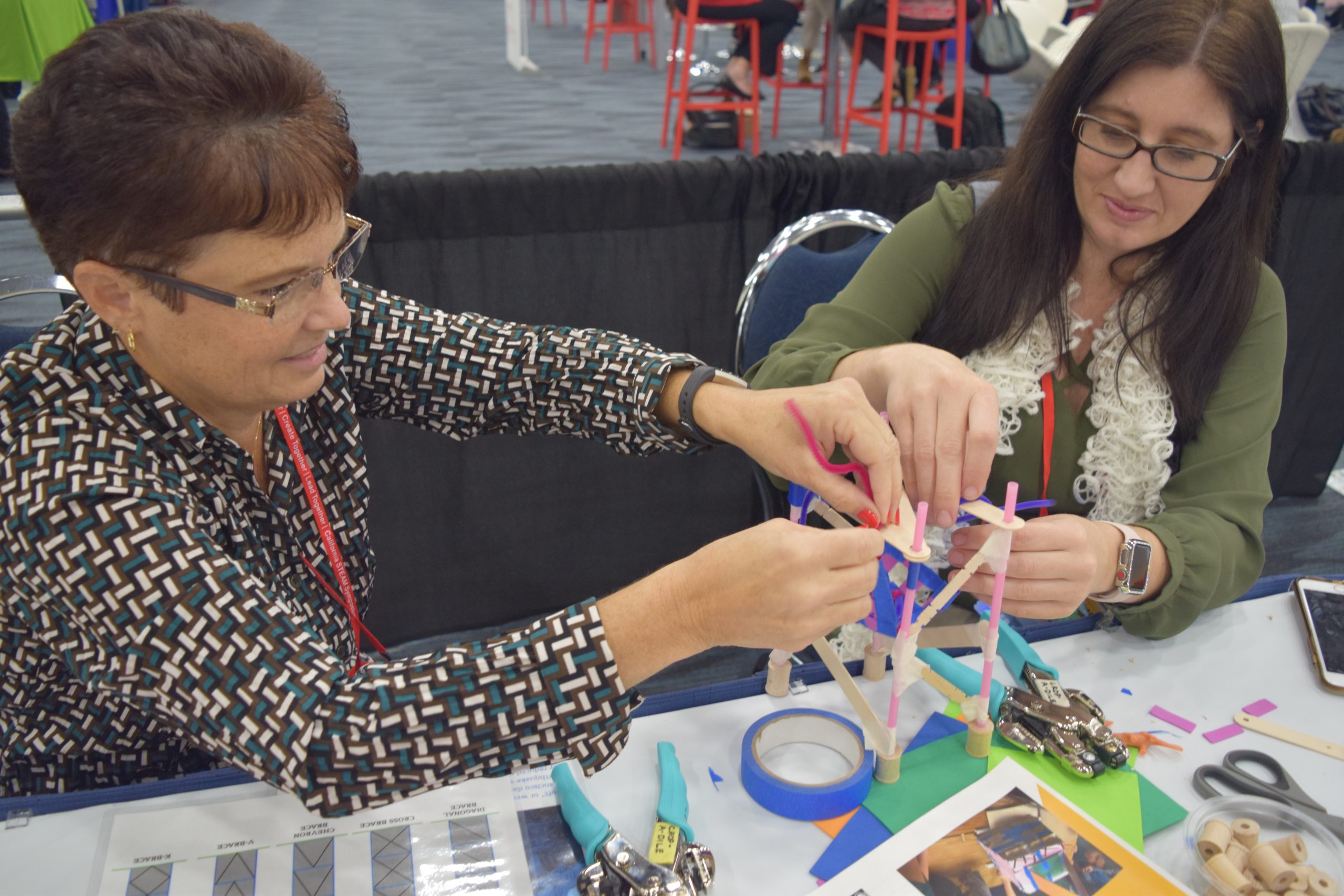
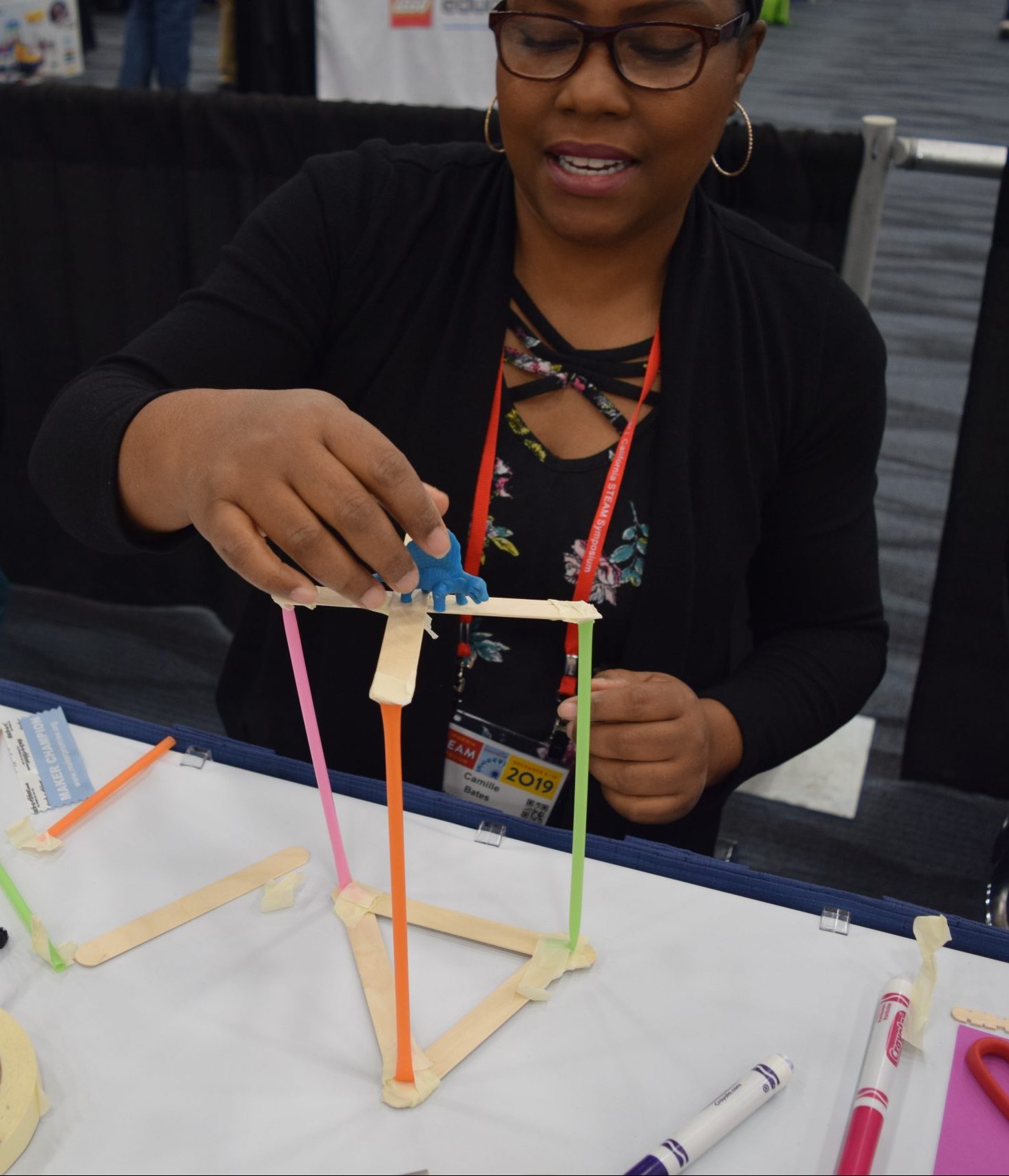
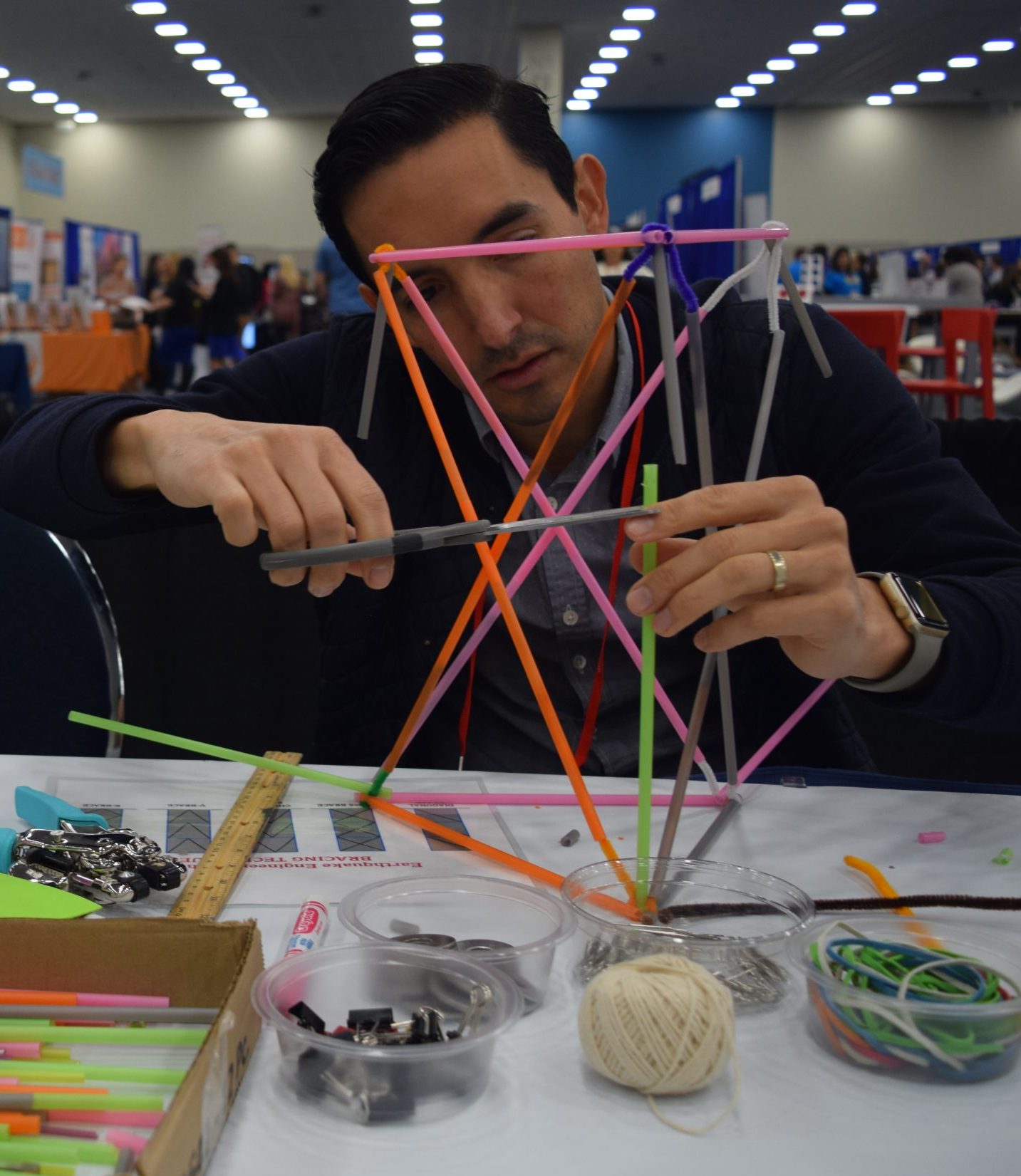
After educators built their prototype structure, they tested them on a motorized shake table to simulate the intensity of an earthquake. The shake table allowed us to test the structures’ resistance and stability consistently, each time they were modified.
Check out this video below for an example of how these structural modifications were tested. This educator first created a structure that kept falling over and was shaky; she added weights to the middle of her structure and saw an immediate difference in how much more stable it became. We loved witnessing these moments of joyful discovery as educators spent time making and creating together.
On the second day of the STEAM Symposium, we also facilitated an hour-long workshop focused on cardboard linkages. We began the workshop by investigating different mechanical motions through a Parts, Purposes, Complexities thinking routine from Agency by Design. This thinking routine is perfect for looking closely at objects and making discoveries about their observations.


We love cardboard linkages because the activity encourages learners to collaboratively create an abstract mechanism that turns into something concrete. Through the process of experimenting with different types and combinations of linkages, learners can design a mechanism that intrigues them or inspires them in some way.



After initially tinkering and sharing their discoveries with each other, pairs created a “moving monster” out of cardboard and other simple materials. Cardboard linkages also allow for creativity and storytelling elements. It was inspiring to see the kinds of creatures that different pairs made!
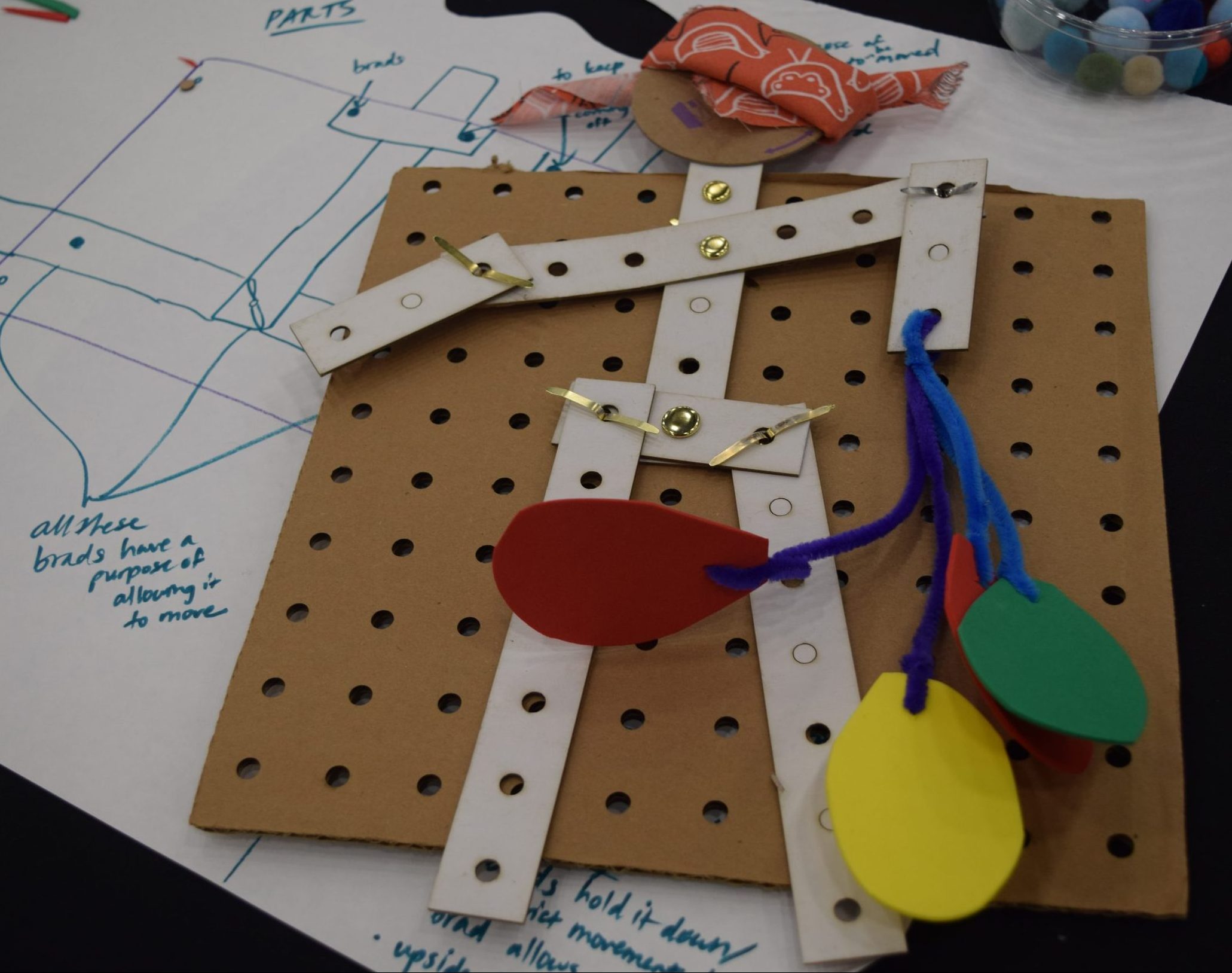
 One of our favorite creatures was this animated “Baby Yoda” (from the TV series Star Wars: The Mandalorian). We loved the joy, collaboration, and creativity that went into creating this linkage mechanism.
One of our favorite creatures was this animated “Baby Yoda” (from the TV series Star Wars: The Mandalorian). We loved the joy, collaboration, and creativity that went into creating this linkage mechanism.
Over our two days at the STEAM Symposium, we met so many wonderful educators who shared ideas about applying low-entry, high-ceiling activities like these in their classrooms. It was great facilitating experiences for educators, listening to them reflect on their experience as learners, and having an opportunity to make and connect with others!

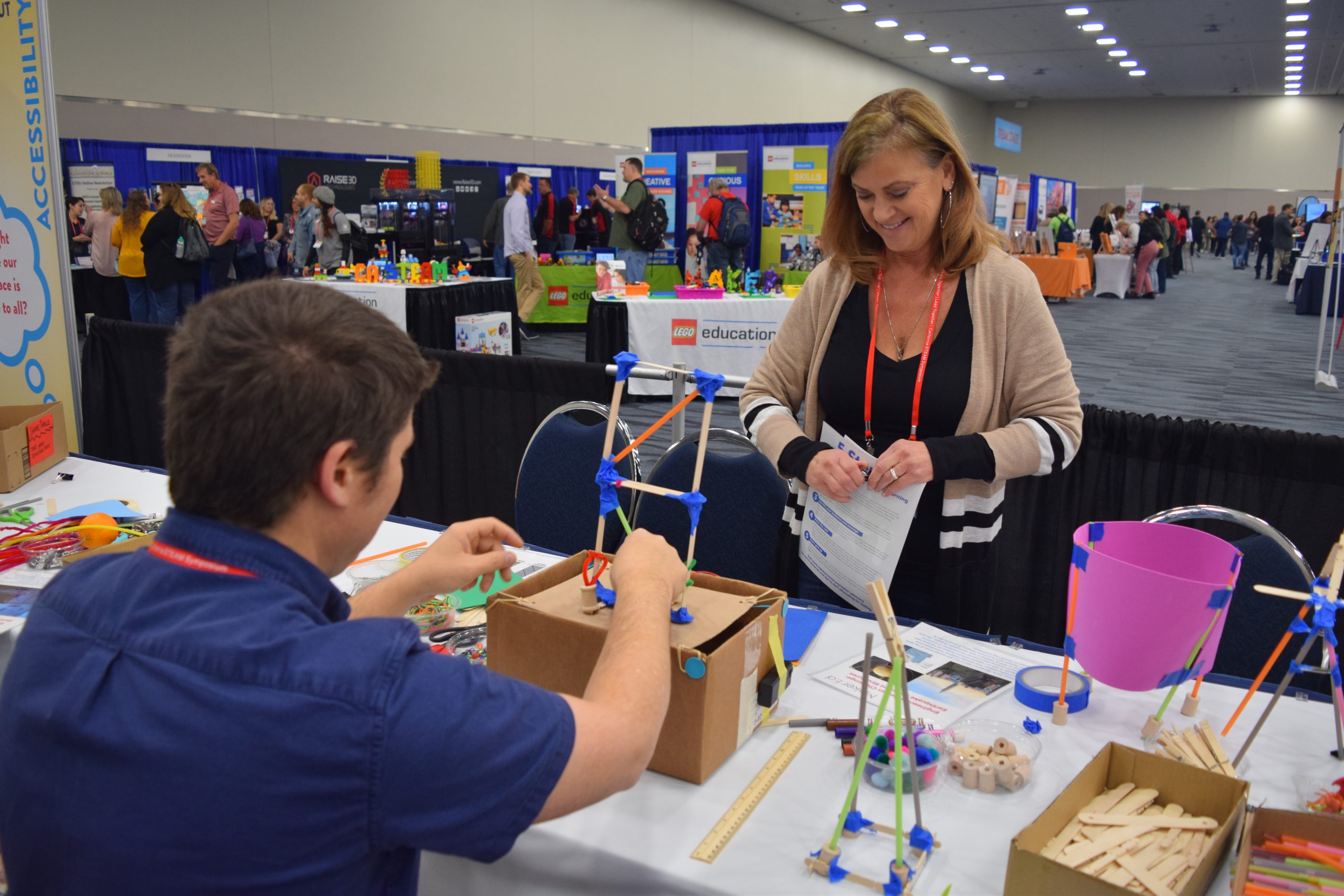
Leave a Reply